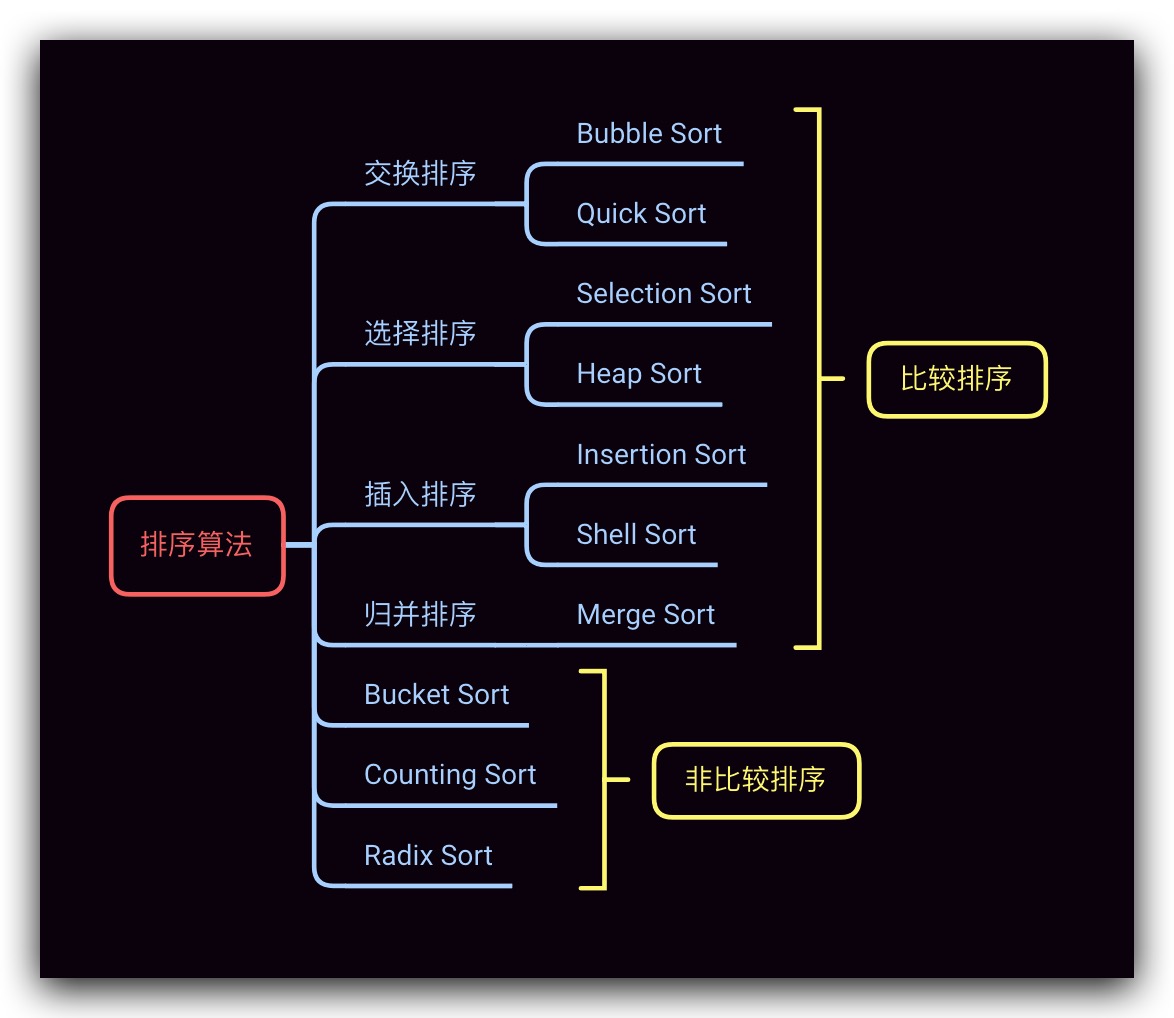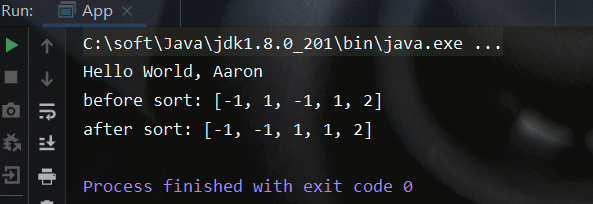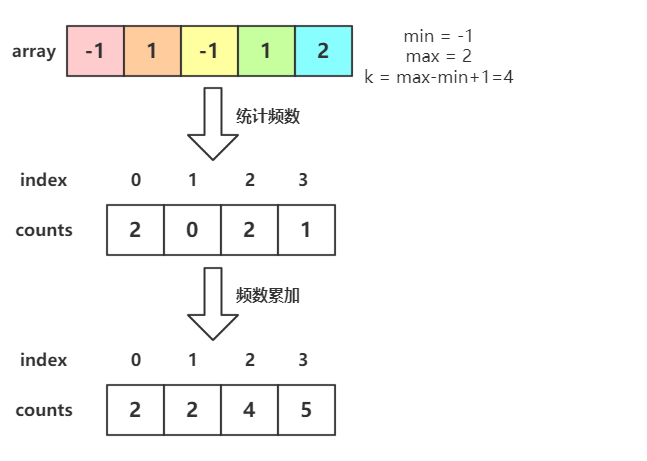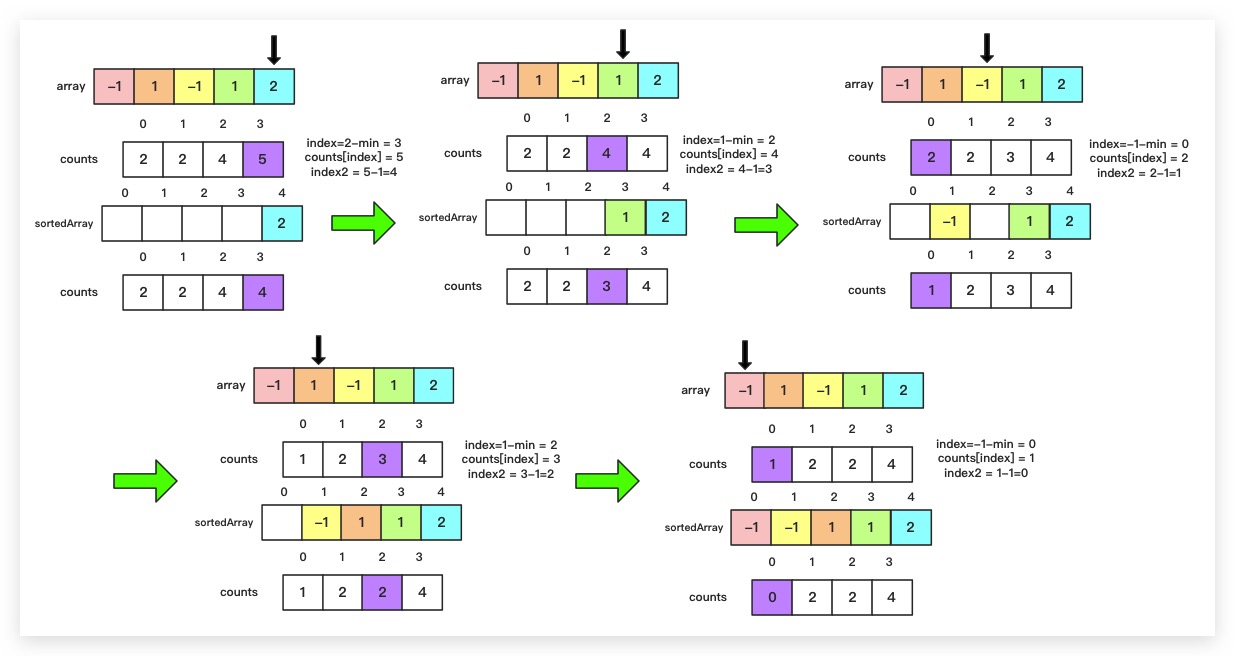之前文章介绍的一些排序算法都是基于比较来进行排序的,故它们在平均情况下的时间复杂度最好也不过是线性对数级别。这里我们来介绍一种简单的基于非比较的排序算法——Counting Sort 计数排序,其时间复杂度可以达到线性级别

基本思想
Counting Sort 计数排序,顾名思义,就是统计待排序数组元素的出现次数。其基本思想比较简单:
- 根据待排序元素的数值范围大小k(max-min+1),建立一个k大小的频数统计数组counts。对于counts数组而言,其索引范围 0 ~ k-1,正好可以对应到待排序元素的取值范围min~max上
- 统计待排序元素element的次数,并其存储到counts数组中,即counts[ elemet-min ] = countValue
待计数统计完成后遍历counts数组,根据次数值来输出原待排序元素值,此时即完成排序
这里给出计数排序在Java下的实现:
1
2
3
4
5
6
7
8
9
10
11
12
13
14
15
16
17
18
19
20
21
22
23
24
25
26
27
28
29
30
31
32
33
34
35
36
37
38
39
40
41
42
43
44
45
46
47
48
49
50
51
52
53
54
55
56
57
58
59
60
61
62
63
64
65
66
67
68
69
70
71
|
public class CountingSort {
public static void sort1() {
int[] array = getTestCase();
int size = array.length;
System.out.println("before sort: " + Arrays.toString(array) );
int[] minMax = getMinMax(array);
int min = minMax[0];
int max = minMax[1];
int k = max-min+1;
int[] counts = new int[ k ];
for(int i=0; i<size; i++) {
int dataInCountIndex = array[i] - min;
counts[dataInCountIndex] +=1;
}
int j = 0;
for(int i=0; i<k; i++) {
int originalData = i + min;
while( counts[i]>0 ) {
array[j] = originalData;
counts[i]--;
j++;
}
}
System.out.println("after sort: " + Arrays.toString(array) );
}
private static int[] getMinMax(int[] array) {
int min = array[0];
int max = array[0];
for(int i=1; i<array.length; i++) {
if( array[i]>max ) {
max = array[i];
}
if( array[i]<min ) {
min = array[i];
}
}
int[] minMax = new int[]{min,max};
return minMax;
}
private static int[] getTestCase() {
int[] caseArray = {-1,1,-1,1,2};
return caseArray;
}
}
|
测试结果如下:

稳定的计数排序
基本原理
上面的计数排序算法是非稳定的,而一般我们所说的计数排序都是稳定的。那么如何保证计数排序的稳定性呢?其实很简单,只需在统计完待排序元素的频数后,对counts作累加计算(counts[i] = counts[i-1] + counts[i]),即计算统计数组中指定索引位置上的元素在排序后的位置;然后倒序遍历原数组,根据counts数组中的排序位置来将待排序元素放入合适的位置,同时将counts数组相应的值减1,以使下一个重复的排序元素可以放在前一位的位置上,以保证稳定性
算法图解
下图即是通过稳定的计数排序对 -1,1,-1,1,2 序列进行升序排列的图解过程
1. 建立counts数组

2. 倒序遍历原待排序数组,按升序排列

Java实现
这里给出计数排序在Java下的实现:
1
2
3
4
5
6
7
8
9
10
11
12
13
14
15
16
17
18
19
20
21
22
23
24
25
26
27
28
29
30
31
32
33
34
35
36
37
38
39
40
41
42
43
44
45
46
47
48
49
50
51
|
public class CountingSort {
...
public static void sort2() {
int[] array = getTestCase();
int size = array.length;
System.out.println("before sort: " + Arrays.toString(array) );
int[] minMax = getMinMax(array);
int min = minMax[0];
int max = minMax[1];
int k = max-min+1;
int[] counts = new int[ k ];
for(int i=0; i<size; i++) {
int dataInCountIndex = array[i] - min;
counts[dataInCountIndex] +=1;
}
for(int i=1; i<k; i++) {
counts[i] = counts[i-1] + counts[i];
}
int[] sortedArray = new int[size];
for(int i=size-1; i>=0; i--) {
int dataInCountIndex = array[i] - min;
int sortIndex = counts[dataInCountIndex] - 1;
sortedArray[sortIndex] = array[i];
counts[dataInCountIndex]--;
}
System.out.println("after sort: " + Arrays.toString(sortedArray) );
}
...
}
|
测试结果如下:

特点
复杂度、稳定性
这里以稳定的计数排序进行说明:
| 时间复杂度 |
空间复杂度 |
稳定性 |
| $O(N + k)$ |
$O(N + k)$ |
稳定 |
缺陷
- 计数排序只能适用待排序元素为整数的场景
- 待排序元素的数值范围(极差)过大的情况下,计数排序会浪费大量空间,故一般不推荐使用计数排序
参考文献
- 算法导论 · 第3版





